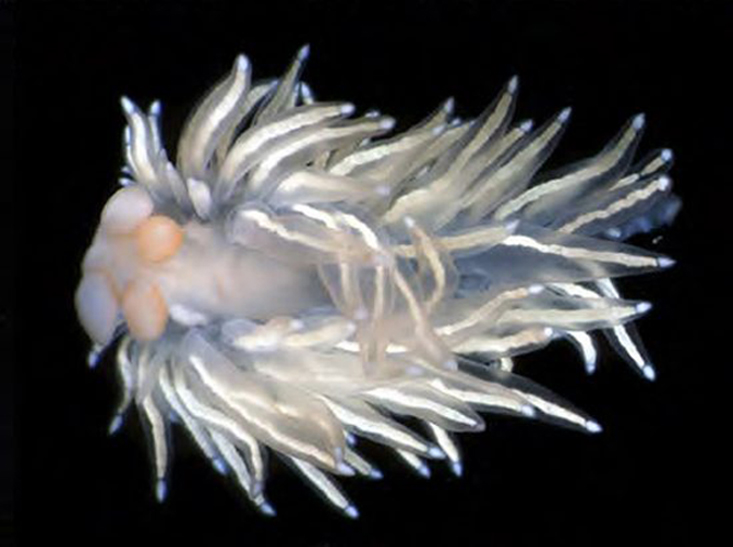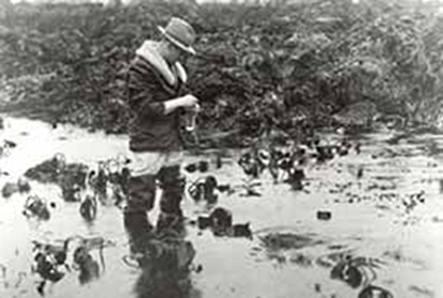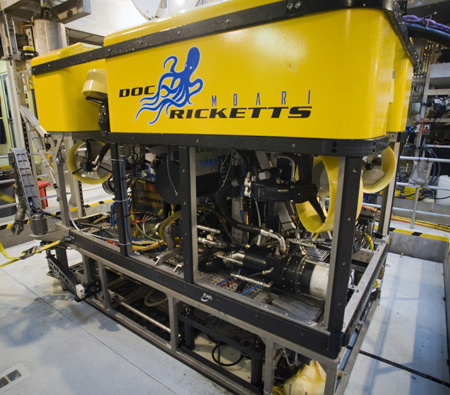 |
Cuthona methana
 |
Cuthona methana Valdes, Lundsten & Wilson 2018. The last in our series of recently discovered deepwater species off the California and Oregon coastlines is this amazing species, found on a methane seep. The body is white. The cerata are translucent with white digestive glands and white cnidosacs. The cerata are arranged in lateral rows. The rhinophores are smooth and pink-orange. The authors explained that this species phylogenetic position remains in Cuthona until further evaluation of the family Fionidae is completed. Specimens are tiny, ranging in size from 4-6mm in length. |
 |
The specimens were photographed and collected by the ROV Doc Ricketts (seen at left) at a hydrate ridge off Newport, Oregon in 587-610 m deep. The species is named for the methane seep environment where it as found. Reference: Valdes,A. & Lundsten, L. & Wilson, N. (2018). Five new deep-sea species of nudibranchs (Gastropoda: Heterobranchia: Cladobranchia) from the Northeast Pacific. Zootaxa. 4526. 401. 10.11646/zootaxa.4526.4.1.
Sammamish, WA 98074 Oct. 2019 Send Dave email at davidwbehrens@gmail.com
|

Attention all you Sluggers, and you know who you are! The NSSI 2nd edition is now available in ebook PDF and book form . The hard back version will become available Nov. 1st. Both will cost $65 (individually). You will need to jump through a few hoops to get the electronic version as pdf distribution is protected by Adobe ID!! Please read the following to enable reading your electronic purchase! This new 2nd Edition is updated and reorganized, including 185 new species. Among other features, the new edition includes additional photographs of species, an identification key, and an up-to-date classification reflecting the latest evolutionary relationships. The Indo-Pacific represents the largest expanse of tropical ocean in the world, stretching from the Indian Ocean coast of southern Africa and the Red Sea to the central Pacific of the Hawaiian Islands, Easter Island and the Marquesas. This region supports the most diverse marine fauna of any place in the world for most groups of marine organisms. The nudibranchs and sea slugs are no exception to this rule; there are about 3,000 described species of these organisms in the world and at least 40% of these have been found exclusively in the Indo-Pacific tropics. This book illustrates 2,138 Indo-Pacific nudibranchs and sea slugs, including many undescribed species.
|

|
